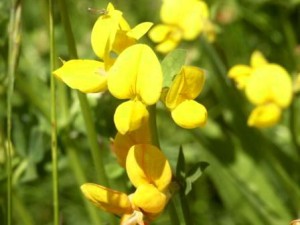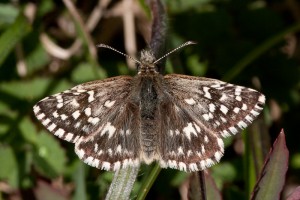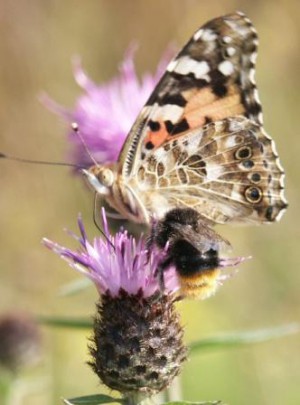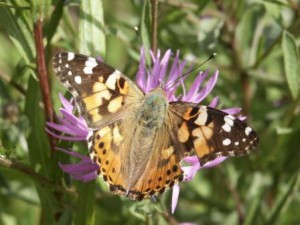Butterflies and moths are a classic part of the British wildlife scene. We can probably all remember the joy of watching them as children, trying to identify them on the buddleia, making a home for a caterpillar in a jam jar and turning out the light at night to stop the moths getting trapped in a lampshade. Sadly, 30 years on there has been a massive decline of both butterflies and moths and we see far fewer in our gardens. As part of our wildlife focus this month, we want to tell you why butterflies and moths are so important and how we can help with conservation efforts.
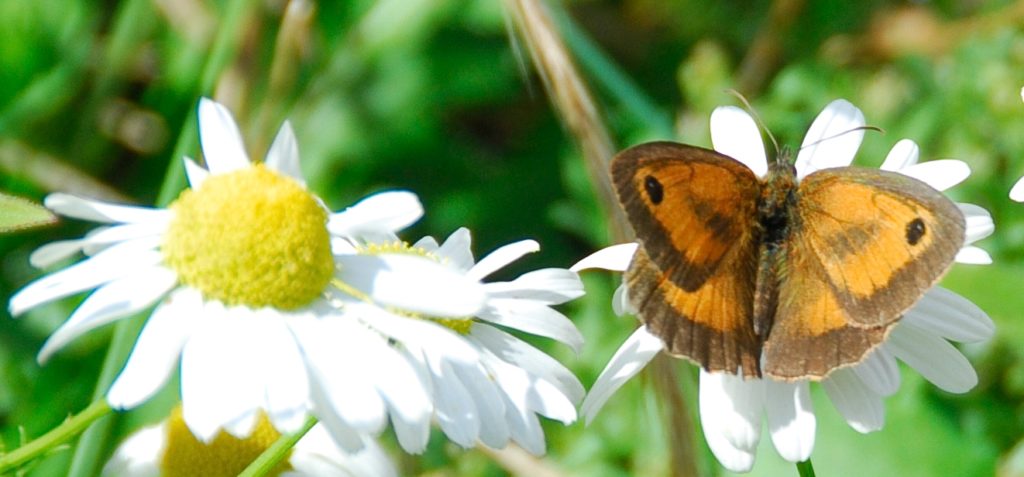
Butterflies and moths play a vital role in the ecosystem and affect many other types of wildlife. They have a key pollinating role and are a rich food source for other species, particularly birds. Because of their short and varied lifecycles they are a well known measure of the health of the environment. They react very quickly to change in their environment and so can be used as an early warning system for wildlife losses making them an excellent biodiversity indicator. 50% of the UK’s species are insects and so by studying the fate of the butterfly, we can assess the fortunes of thousands of other insect species.
The decline of moths and butterflies can largely be attributed to habitat loss. Studies by the UK Butterfly Monitoring Scheme, Butterflies for the New Millennium and Butterfly Conservation have suggested that the moth population has decreased by a third since 1968 and in South Britain it is more likely to have seen a 50% decrease since this time. Ten year trends show that 72% of species declined in actual numbers at monitored sites and 54% of species declined in geographical distribution. However their reports also indicate that long term declines of some threatened species may have been slowed or reversed by conservation initiatives. Whilst there are 59 species of butterfly and 2500 species of moths in the UK, over 170 species are threatened and listed as Priority Species in the UK Biodiversity Action Plan.
The Butterfly Conservation charity believe that it is the landscape-scale conservation projects, that restore and join up habitats that will prevent the most threatened butterflies and moths from becoming extinct. Many species depend on a narrow range of plants and food types for their survival. However they do say that gardens can act as important stepping stones between nature reserves and other natural habitat by offering abundant supplies of nectar. Butterflies will visit any garden, however small, if they can feed from suitable nectar plants and a well thought out garden can attract up to 18 species of butterfly and maybe even more if you create more specific breeding habitats.
How to attract butterflies into your garden.
- Butterflies like warmth so choose sunny areas within your garden to plant your butterfly friendly flowers
- They also require sheltered spots, particularly for breeding. They are very light and will have difficulty in windy areas.
- They also like places to sunbathe, so incorporating some flat rocks into a design are great along with an area for water.
- Choose different plants to attract a wider variety of species, they particularly like tubular flowers.
- Try to provide a range of flowers that have different flowering times to cater for butterflies throughout the season. Spring flowers are vital for butterflies coming out of hibernation and Autumn flowers help butterflies build up their reserves for winter.
- Don’t use insecticides and pesticides. They kill butterflies and many pollinating insects as well as ladybirds, ground beetles and spiders.
- Don’t buy peat compost. Peat bogs are home to many special animals and plants, including the Large Heath butterfly, which is declining across Europe. There are now good alternatives available from garden centres.
- Night scented plants are great for moths.
Wildflower Turf makes the perfect ‘Butterfly Habitat Garden’
The native species in our wildflower turf have been carefully selected to provide food and habitat for a wide variety of UK Butterflies. We have given careful consideration to both food for the lava (caterpillars) as well as rich nectar sources for butterflies. There are 34 native species in our Landscape Wildflower Turf and of particular note are Birds Foot Trefoil, a great food plant for many laval and adult butterflies and moths, including the beautiful Grizzled Skipper, seen below.
The common knapweed is also a great food source for adult butterflies and moths as well as being a great bee magnet. Below are pictures of a Painted Lady butterfly, we regularly see them in our wildflowers just outside the office.
Field scabious is another great wildflower, that is fantastic for colour later on in the summer and is enjoyed by many of the Skipper butterflies in particular and the picture below shows a Brimstone on the scabious.
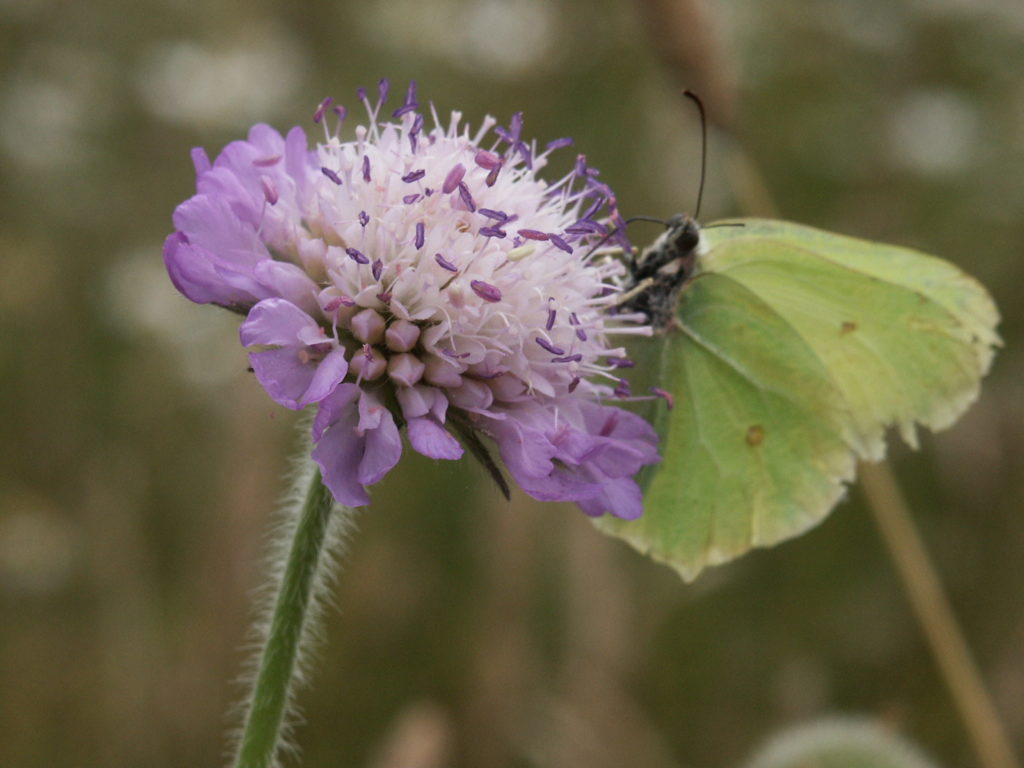
Ladys bedstraw, common sorrel and mallow musk are also fabulous food sources
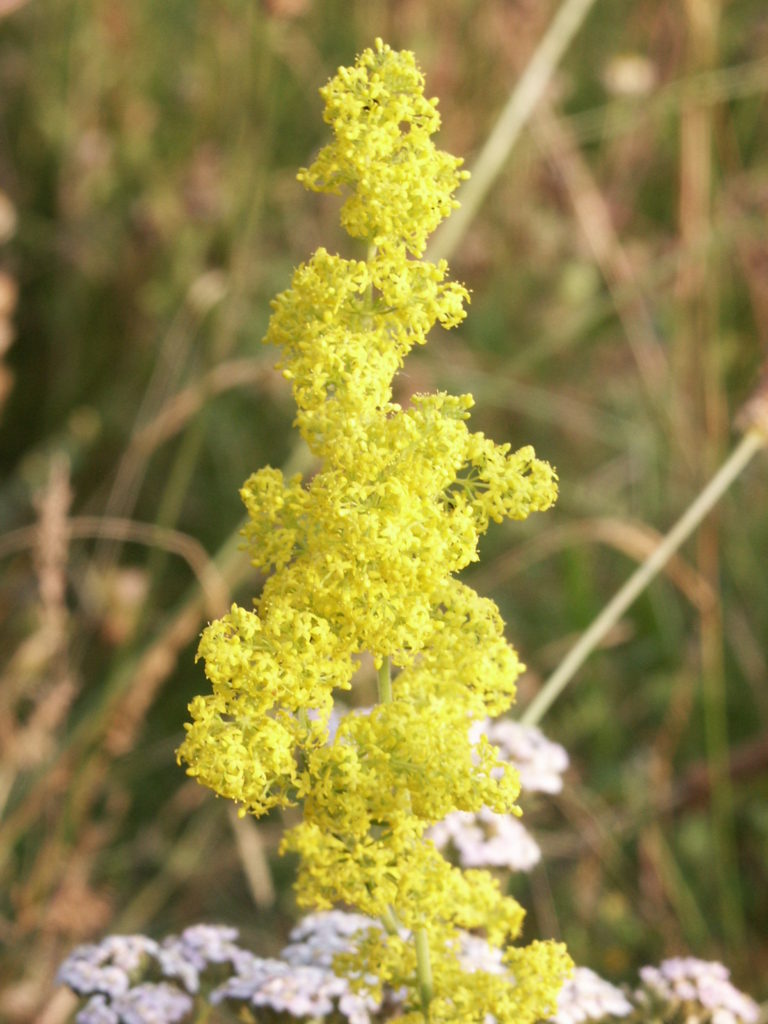
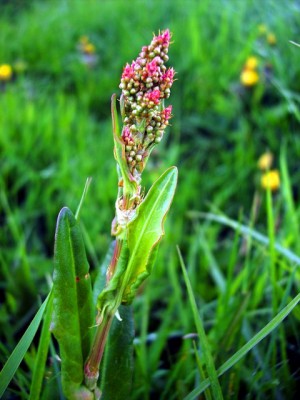
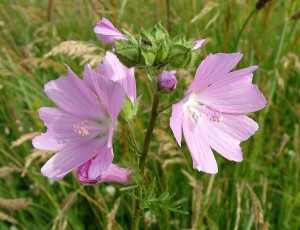
GET INVOLVED IN VITAL RESEARCH
The Butterfly Conservation co-ordinates the Big Butterfly Count which is the largest survey of butterflies in the world. It was started in 2010 last year and saw 46,000 people get involved, counting over 830,000 butterflies and moths. This year it will take place between 19th July to 10th August. All you have to do is spend 15 minutes on a sunny day, logging what you see via the Big Butterfly Count website or downloading an app for your smartphone available for iOS and Android. It couldn’t be easier.
iRecord Butterflies is the national recording scheme for butterfly identifications by the Butterfly Conservation Trust and helps them to concentrate their conservation efforts on those butterflies that are most at risk. It is particularly brilliant for butterfly novices as it helps you identify the different species with easy to use filters for colour, pattern and size. Again you can get the app for your smartphone from iTunes or the Google Store.
For further information please look at the following links:
Butterfly Conservation
Butterfly Monitoring Scheme
Big Butterfly Count
UK Butterflies
